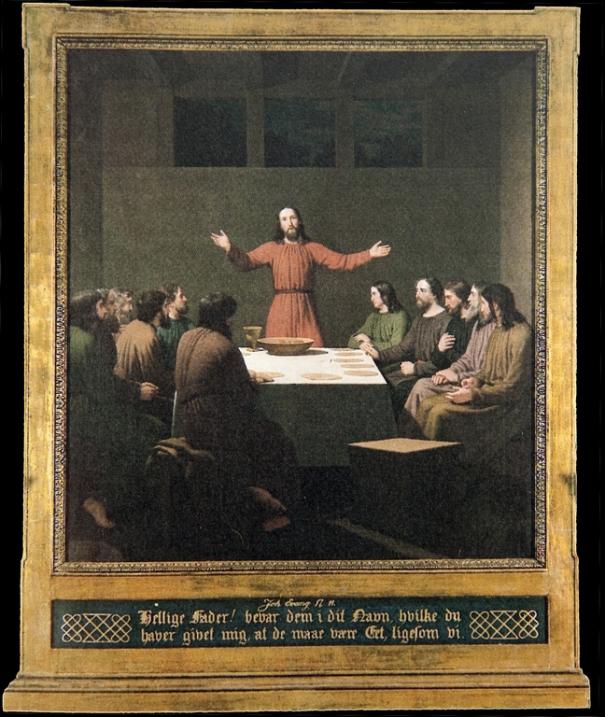Last Supper
Documentation:
Lene Bøgh Rønberg explains how Eckersberg utilized perspective to convey meaning:
“Because the horizon line, according to the perspectival construction of the painting, runs along Christ’s shoulders, his head is conceived as already being up in the heavenly realm, while his body still stands on the earth. The disciples also find themselves in the earthly region, except that Judas, Christ’s betrayer, has left the scene. This departure is emphasized by the light thrown on Judas’ empty seat, but also by the fact that, quite unusually, Eckersberg has introduced a second vanishing point at the left edge of the painting, near the elbow of the apostle sitting farthest away. Thus the new perspective defines this seat, and Judas is given his own horizon line, which is placed below the division of heaven and earth in the painting’s divine hierarchy, making clear that he is damned. The placement to f his vanishing point at the far edge of the painting also seems to indicate not only his physical but his mental and spiritual movement away from the harmonious whole of the painting and toward betrayal.”
Lene Bøgh Rønberg, “The Last Supper,” Christoffer Wilhelm Eckersberg, 1783-1853, Philip Conisbee, Kasper Monrad, and Lene Bøgh Rønberg, eds. (Washington: National Gallery of Art, 2003), 120.
Similar subjects by other artists:
Leonardo da Vinci, Last Supper, 1495-97 (Santa Maria delle Grazie, Milan)
Gottfried Eichler, The Last Supper, 1730 (Barfüss Church, Augsburg)
About the Artist
Died: Copenhagen, 22 July 1853
Nationality: Danish


 Buy the Book
Buy the Book